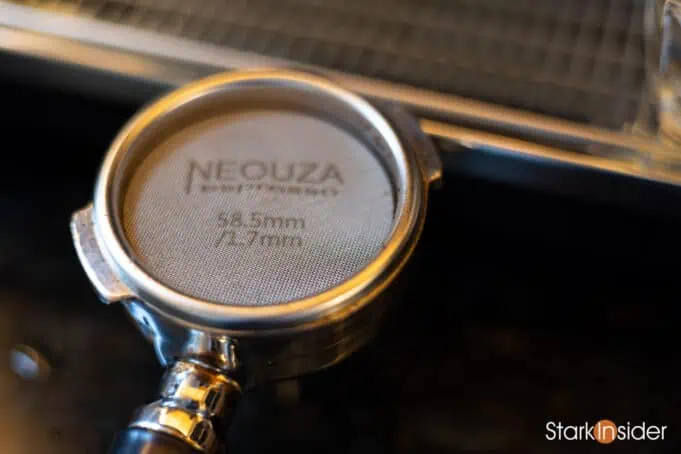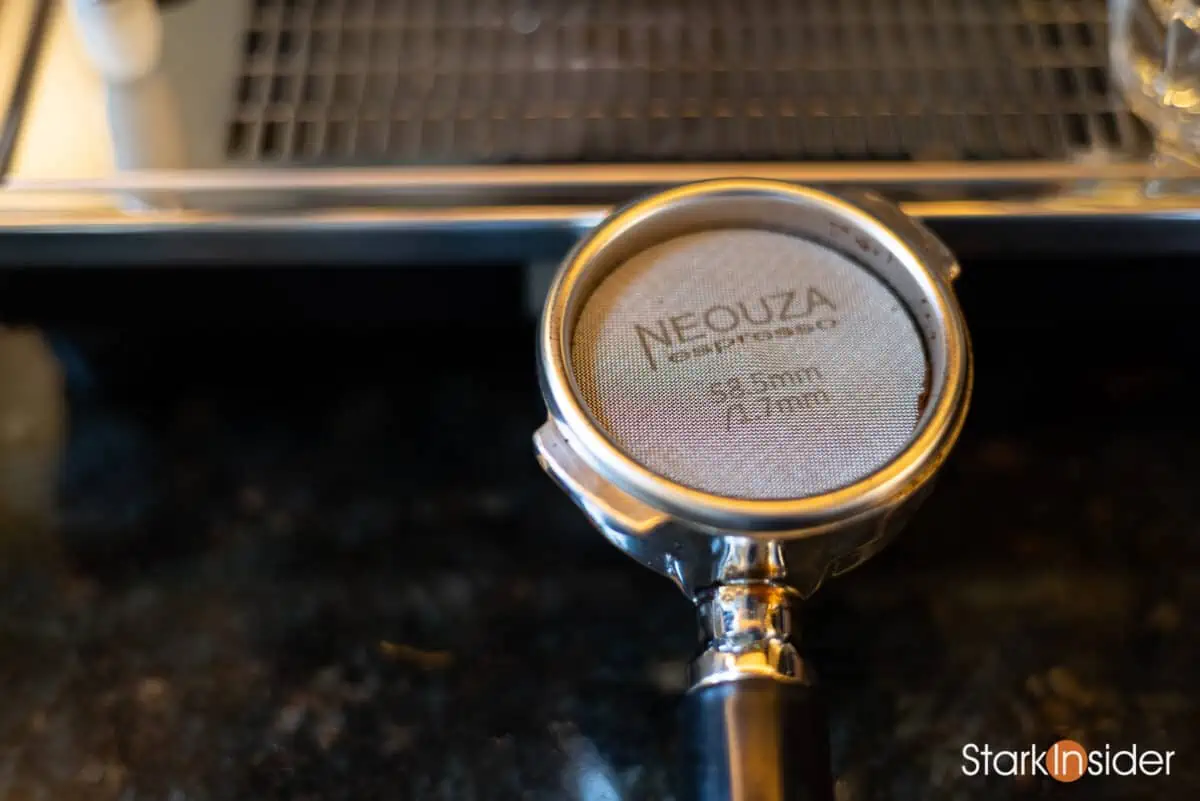UPDATE: After a week or so of incorporating a puck screen into my espresso workflow I’m still getting outstanding results. Crazy. I should’ve done this sooner! Clean pucks. Less mess on the shower screen. And delicious shots with copious crema. Also I realized that there’s these neat little walnut puck screen stands if you want a stylish place to store the puck screen when not in use. I mean, they have an espresso accessory for everything these days. (I’ve been just leaving it resting on the drip tray to dry out after rinsing, that works too).
These days there seems to be a never ending limit to the sorcery employed in the making of a home espresso drink. WDT. Distributors and associated voodoo. Portafilter funnels. Timers. Scales.
My theory is that these various accessories feed our monthly need to assuage an ever growing obsession to find the “endgame” and ensure that by constantly tweaking we’re making some sort of progress. Could very well be. Or not.
The latest thing I’ve noticed people commonly share in their coffee station setup photos or on YouTube videos is the…
Puck Screen.
Surely I don’t need one. After scanning Amazon I noticed they were inexpensive. Okay, maybe I do? So I gave it a literal shot. Below I share the results and reach a verdict and see if a puck screen can help make a more consistent, better espresso shot — for me at least.
What is an Espresso Puck Screen?
But, first what on earth are we talking about here?
A puck screen is a thin (1.7mm), circular piece of stainless steel (typically) that has tiny filtration pores (150μm in my test case) to help pressurize and channel water flow evenly. They’re available in a variety of sizes, such as 49mm, 51mm, 53.5mm or 58.5mm.
You should get the one that fits your particular portafilter size. For the majority of espresso home users that’ll likely mean a 58mm portafilter and, hence, a 58.5mm puck screen. That holds true for most users of storied single boiler machines like the Gaggia Classic Pro and Rancilio Silvia, and the newer Profitec Go, and E61-based heat exchanger machines from the likes of ECM, Bezzera, Profitec, Rocket Espresso, among others.
The idea is that this piece of metal will sit on top of your tamped coffee grind and essential former a tiny barrier between it and the shower screen on the group head above. So you grind you beans. Fill your portafilter. Tamp as usual. And, then, before inserting the portafilter, you first slip this puck screen on top of the coffee grind and then go ahead with the rest of your brewing process.
So I wondered if the puck screen could have any positive impact on my shot? Would it make for a less messy shower screen as some had observed? Would it reduce the dreaded channeling that forever haunts Reddit? And, most importantly, would it have any impact on the quality of the espresso shot?
Testing: Is a Puck Screen Effective and Can it Yield Better Espresso?
So, this morning I gave this particular Puck Screen a go in my workhorse that is the Pasquini Livia 90. (Seriously, if you are in the hunt for a budget HX machine, search one out. Might need a little elbow grease, but possibly well worth it).
My overcast morning in the San Francisco Bay Area testing an espresso puck screen as captured in photos below…
A 58.5mm Puck Screen Ready for Action
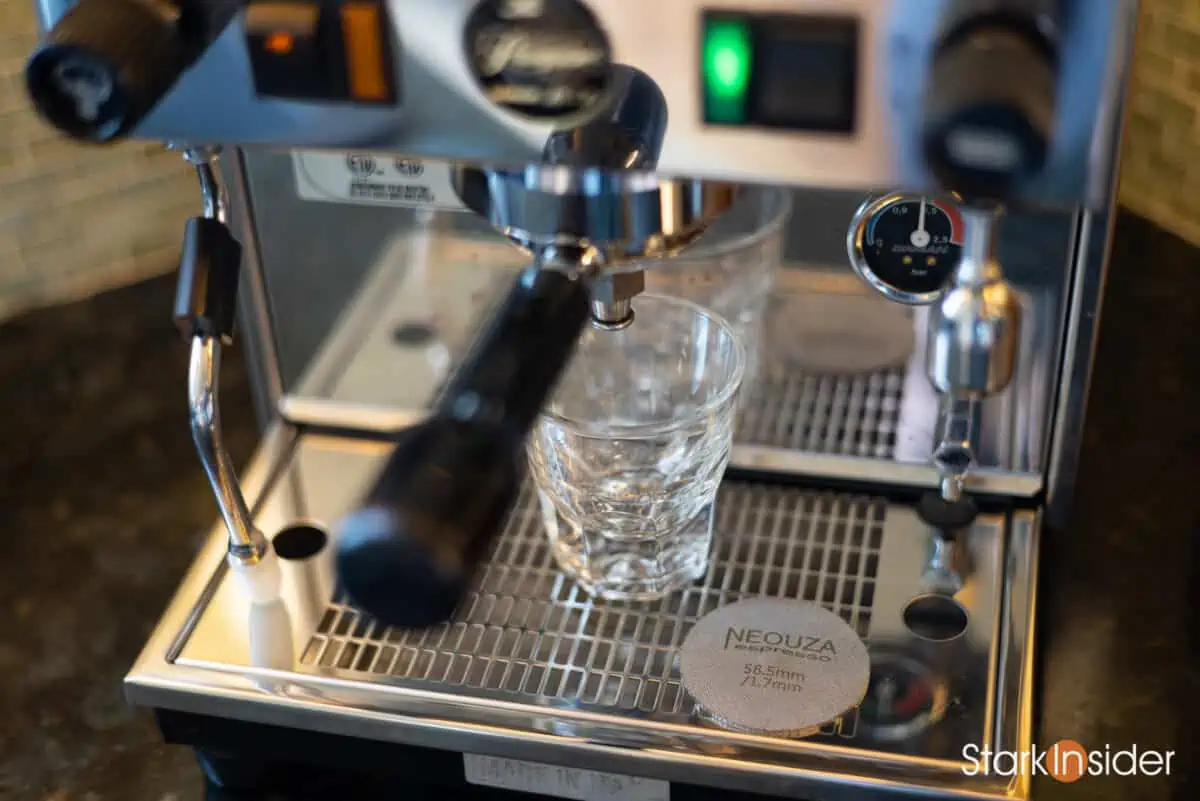
In the Portafilter After Tamping
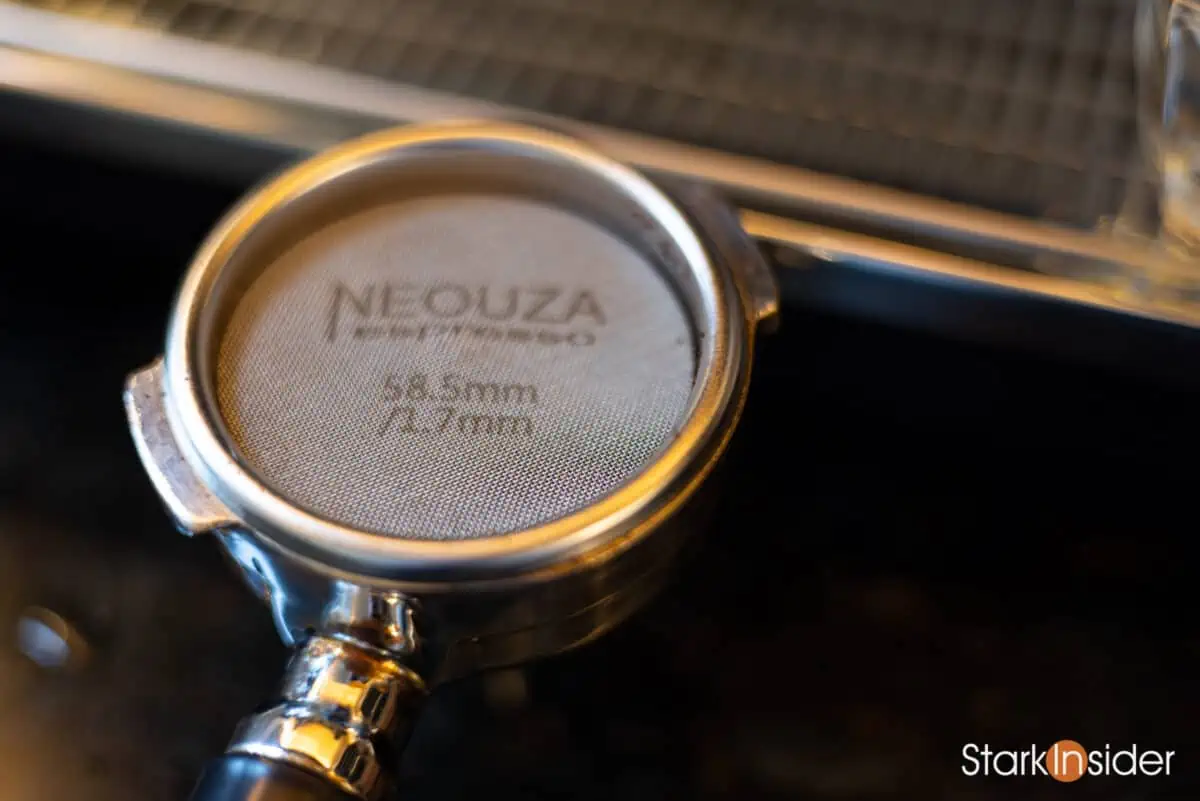
Post Shot and Cortado with My Subpar Octopus Latte Art


Post-shot Puck Screen Close-Up!
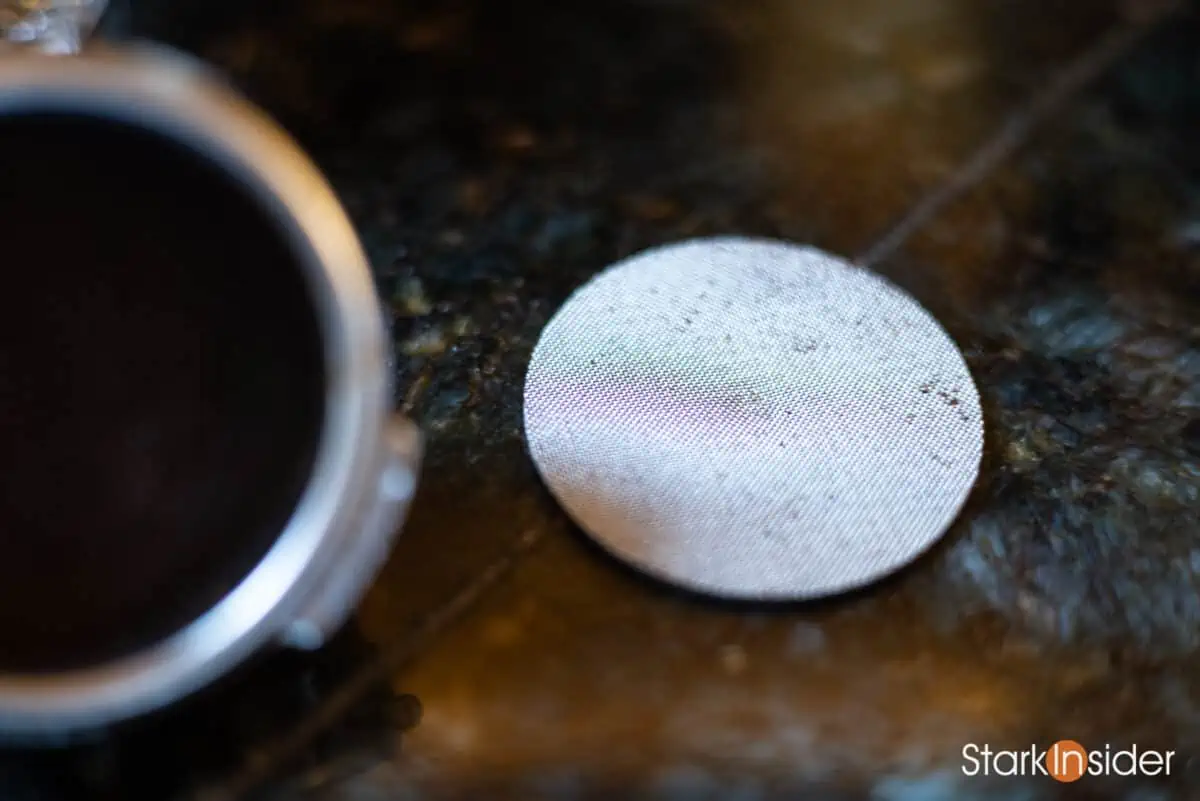
And Ready for the Puck Hall of Fame
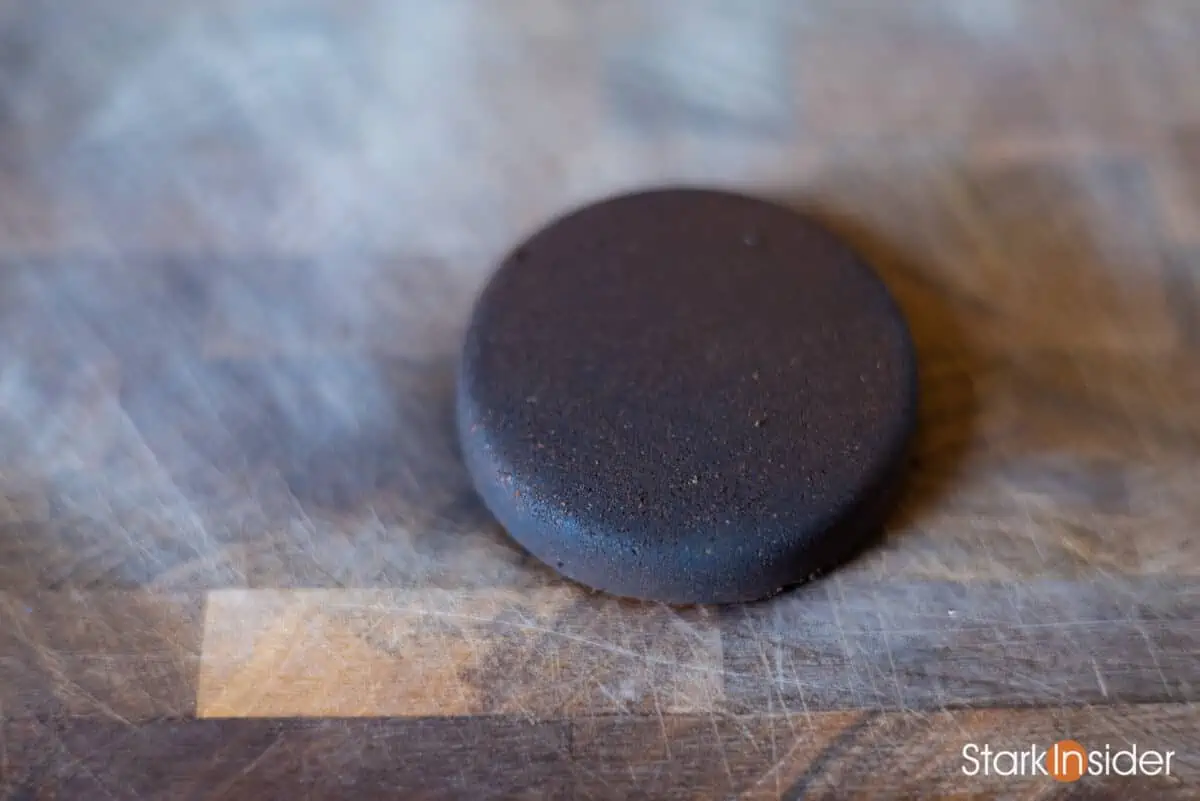
Verdict: Puck Screen. Yes or No?
I’d have to say yes, despite my initial skepticism.
I found the puck screen did, indeed, deliver on its promise. There was far less messy grind mess on the shower head above in the group. The extraction was a little bit slower, which was a good thing as I was previously running fast. So now I’m hitting about 2 ounces in about 25 seconds. Crema looks great. And the shot in the Cortado tastes really, really wonderful.
Given these puck screens are so inexpensive compared to just about any other gadget in the espresso universe it may be at least a try if you’re not sure.
For those starting out, I’d shy away from all these do-das. Get the basics right first: grinding, tamping, clocking in, frothing, latte art if you want. Once you’ve developed some of those skills, then consider diving into the world of espresso sorcery and magic. The fewer the variables to deal with while you’re learning the better.
Tip:
I had to use slightly less grind in my portafilter basket to allow room for the puck screen.
Also, you may notice clocking in takes a little more force, especially the first time. The shower screen on my Pasquini has a slightly protruding screw holding it in place. Most should be flush. But in my case the screw did cause a minor indentation. Doesn’t seem to be an issue. But do be careful you don’t damage anything in your group head when using one of these.
In the end these types of accessories kind of come down to where you stand on the scale of whistle-and-sing-show-tunes-while-you-brew (0) to this-is-a-science-fair-project (10) sort of espresso hobbyist. I’m about a 4 or 5 — begrudgingly willing to try new things, but pretty happy with my workflow and life as it stands thanks. And, I admit, I do occasionally look at those sitting at about a 9 or 10 with tablets connected to poor, poor espresso machines with sorry amusement and bewilderment. And maybe even despair. After all, this is the grand Italian and European tradition. Not an IT start-up. I tend to prefer the art part of it more than the science part as I get enough of the latter every single day working on this site and just about anything else we do these days.
ALSO SEE: Does the Jura Z10 make good quality espresso? A spent espresso puck may hold a clue
But, I guess we all need to keep open minds. As, in the case of the puck screen, I did see improvements by trying something new, albeit minor. That in itself is part of the evolution of the craft I think the tinkerers might suggest is partly the goal. Let’s not just stick to the ways of the past, but let’s move the goal posts.
All well and good, but please, please do not try to connect your iPad to my Bezzera.
Because making espresso is a contact sport!
In the end I do recommend a puck screen, be it the one above from NEOUZA or perhaps pay a little more for a combo from Normcore which includes both a 1.7mm screen and 1mm screen so you choose depending on your dose. In our tests the puck screen performed as advertised. And, best of all, it doesn’t require much effort to use and should have minimal impact on your workflow in terms of time — but should save a lot of maintenance hassle later thanks to keeping the group head and shower screen cleaner.
After putting the puck screen on top of your tamped dose, the water will flow as follows:
- Group Head >>
- Shower Screen >>
- Puck Screen >>
- Tamped Puck >>
- Filter Basket >>
- … into your espresso container of choice
-
Buy a puck screen as seen above on Amazon
Note: I bought this item at my own expense — albeit minor by espresso nerd standards. All commentary and test results are based on 18 years of pulling espresso shots on a semi-automatic espresso machine, and using the product in a real life scenario while sadly still not achieving anything close to latte art perfection.
Note 2: Beans used in above drink examples are the mighty Lavazza Super Crema.

